From the April 2022 issue of Apollo. Preview and subscribe here.
Bastion House is aptly named. Looming over London Wall, it has a monolithic grandeur, every inch the imperious, modern office building. At 17 storeys high, it would be a mere stripling in Manhattan, but with its crisp, curtain-walled exterior, it still exudes midtown panache, designed for deal-doers and Don Drapers, rolling back to their offices from long martini lunches. Its architects were Philip Powell and Hidalgo ‘Jacko’ Moya, who worked on the 1951 Festival of Britain, conjuring the famously futuristic Skylon, doomed to meet an ignominious end in a Canning Town scrapyard. Now Bastion House is also doomed, due to be demolished along with the neighbouring Museum of London, another Powell & Moya design.
Paraphrasing Oscar Wilde, to lose one Powell & Moya building may be regarded as a misfortune; two looks like carelessness, but the Museum of London is decamping to new quarters in Smithfield Market and its departure has initiated a comprehensive redevelopment of the west end of London Wall. Announced with some fanfare in 2019, the original plan was for the razed site to be the setting for a £288 million Centre for Music, a kind of Barbican 2.0, designed by American firm Diller Scofidio + Renfro. Since then, however, ambitions and fundraising urges have shrivelled in the post-Covid comedown, so concert-going has given way to commerce. The latest plan for the site sees a trio of generic office buildings choreographed around some green sward, in an attempt to humanise an unforgiving public realm.
London Wall demarcates the boundary of Londinium, the Roman city, the most venerable part of the capital, long overwhelmed by galumphing Mammon. Conceived in an era when planners were more interested in cars than people, it’s a dystopian post-war concerto of decks, blocks and elevated promenades. The removal of Bastion House will invariably diminish this urban ensemble, but since it was granted a certificate of immunity from listing by then Culture Secretary Nicky Morgan in 2019, its fate seems sealed.
Completed in 1977, Bastion House took its place in the pre-Big Bang City, a lost world of landlines, typewriters, oyster bars and Wren churches. Modern architecture had made some inroads, but most bank headquarters looked like Edwardian wedding cakes. Thatcherite deregulation fuelled a new demand for large, open-plan dealing floors, considered fundamentally incompatible with the City’s medieval network of streets and corset of tradition, initiating a rapid exodus east to the tabula rasa of Canary Wharf. But reports of the death of the City were, as always, greatly exaggerated. Now the bankers are back and office towers are bigger than ever, rejoicing in chummy nicknames such as the Gherkin, Walkie-Talkie and Cheesegrater.
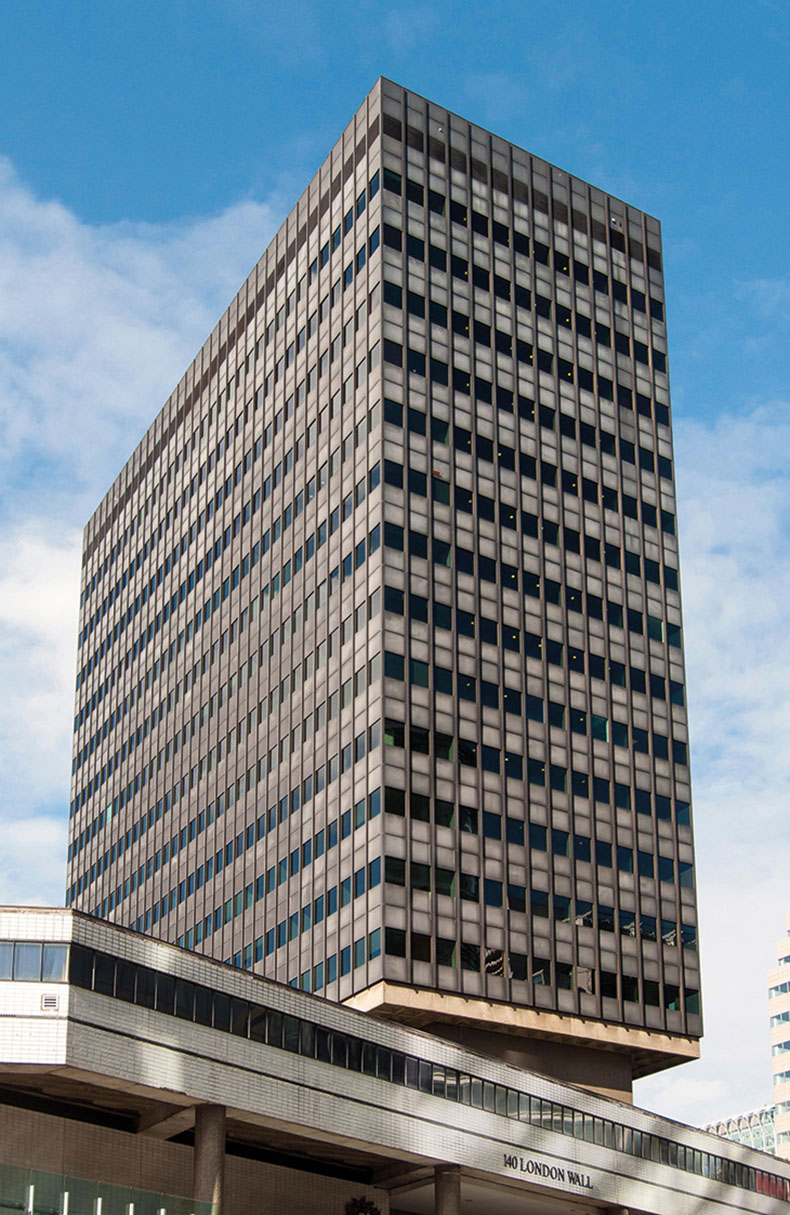
140 London Wall, or Bastion House, in London, designed by Philip Powell (1921–2003) and Hidalgo Moya (1920–94) and completed in 1976. Photo: Petr Svarc/imageBROKER/Alamy Stock Photo
Bastion House has no chummy nickname. Very much of its time, it’s a simple slab block jacked up on chunky piers of biscuit-coloured concrete. Soberly accoutred in a skin of bronze curtain-walling, it has an innate refinement, characteristic of its architects. After the explosive debut of Skylon, Powell & Moya settled into a modus operandi of suave respectability, at the forefront of hospital design, tactfully bringing modernism to nervous Oxbridge colleges, and constructing one of London’s most successful post-war housing schemes, Churchill Gardens in Pimlico. As Powell’s obituary in the Architect’s Journal points out, the critic Reyner Banham described the partnership’s work as ‘gentlemanly’, and such a soubriquet could be equally applied to the ethos of the office and to its output. Neither Powell nor Moya had any desire to relapse into the corporate anonymity of a large practice. The picture gallery at Oxford’s Christ Church College, home to a notable collection of Old Masters, was Powell’s particular favourite: ‘small, compact and yet perfect in its way’.
Bastion House was a rare commercial project and an exercise in conspicuous scale, working within an urban design framework for London Wall devised by London County Council planners in 1955. Strongly influenced by Le Corbusier’s infamous Plan Voisin for redeveloping central Paris, this proposed six towers of identical proportions set equidistant from each other, positioned on a raised pedestrian deck, like objects on a tray. In this respect, Bastion House played a straight modernist bat, but neatly encapsulating the shift in architectural epochs, its immediate London Wall neighbour is Alban Gate, a pink postmodernist confection from 1992 designed by Terry Farrell as if sculpted in marzipan. Like two mismatched guests at a cocktail party, both buildings politely ignore one another, but sometimes, less really is more. The execrable Alban Gate was a replacement for Lee House, a 1962 office block named after Lee Radziwill, younger sister of Jackie Kennedy, whose Polish aristocrat husband also happened to be a director of the development company.
So while the London Wall wheel has always turned, with older buildings making way for more ‘fashionable’ newcomers, the imminent loss of Bastion House and the Museum of London is regrettable. Give that the pandemic has upturned the established model of nine-to-five office life, it seems reasonable to ask if the City really needs yet more generic office blocks and why imaginative new uses could not be found for both buildings.
Equally pertinently, demolition involves squandering resources and energy, and although not every structure can be easily adapted, it’s often said that the greenest building is the one that already exists. But at present, in a dismaying quirk of the UK’s VAT system, a rate of 20 per cent is applicable to most forms of refurbishment, compared with between 0 to 5 per cent on new build, giving economic impetus to the wrecking ball. In a more enlightened future, demolition will surely be seen as an unpalatable last resort – as environmentally anti-social as indoor smoking – but by then, Bastion House will have long been extinguished.
From the April 2022 issue of Apollo. Preview and subscribe here.
Unlimited access from just $16 every 3 months
Subscribe to get unlimited and exclusive access to the top art stories, interviews and exhibition reviews.

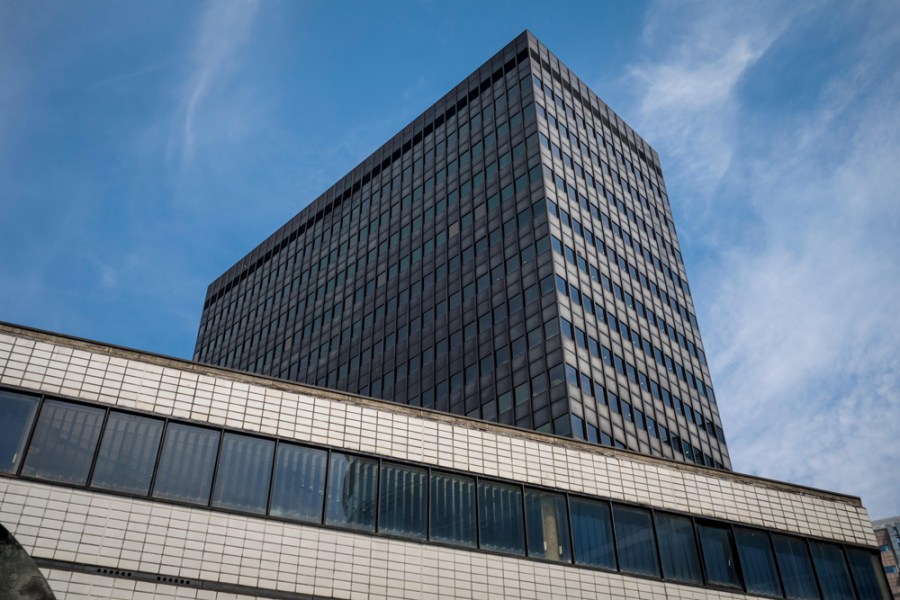
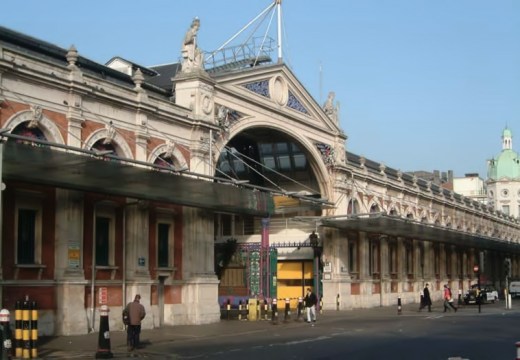
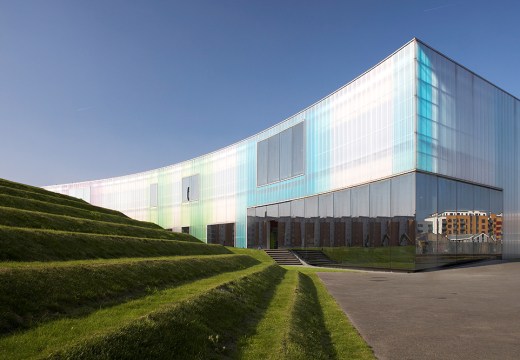
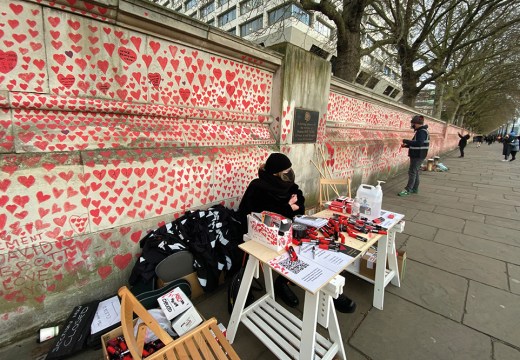









![Masterpiece [Re]discovery 2022. Photo: Ben Fisher Photography, courtesy of Masterpiece London](http://www.apollo-magazine.com/wp-content/uploads/2022/07/MPL2022_4263.jpg)
It’s time for the government of London to return to its rightful home